Winterisation – Living in a Motorhome in Winter
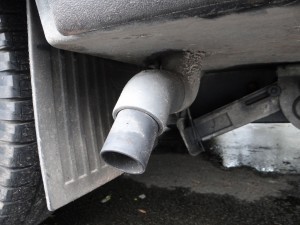 OK, I’ll fess up here: although we’ve lived in a motorhome through two winters, we spent the cold months south, very south. The first year was in Morocco, and the second in Tunisia. The coldest we’ve got down to was probably -3 or -4°C, and then only for a day or two. This year we’re planning on getting into the Alps in a week or so, so should see prolonged sub-zero temperatures this tour. As far as I can tell, Zagan (our 2001 Hymer B544) is about as ready as he could be, but we’ll see!
OK, I’ll fess up here: although we’ve lived in a motorhome through two winters, we spent the cold months south, very south. The first year was in Morocco, and the second in Tunisia. The coldest we’ve got down to was probably -3 or -4°C, and then only for a day or two. This year we’re planning on getting into the Alps in a week or so, so should see prolonged sub-zero temperatures this tour. As far as I can tell, Zagan (our 2001 Hymer B544) is about as ready as he could be, but we’ll see!
So what makes a motorhome ready for winter? This is the stuff we’ve been thinking about. I’ll update this post once we’ve actually had a longish stint in the cold. Any hints and tips gratefully received by the way.
- Fresh water
- We don’t want this stuff freezin’ – we need our brew of a morning! Our B544 has an Al-Ko chassis with two floors – the one we walk about on inside and another one which you can see by sticking your head under the van and looking up. The fresh water tank is sat between these floors, which means it’s insulated from the cold outside temperatures. The space between the floors is also heated by the blown air heating which heats the inside of the van, which again should help avoid the water freezing.
- As an aside, we also need to be able to refill with water every few days. Finding taps which haven’t been turned off for the winter might be a challenge, especially as we don’t tend to use campsites. We’ve various resources to help us (park4night.com, campingcar-infos.com, and the Camperstop Europe book for example).
- Waste water
 Like the fresh water tank, our B544’s waste water tank is sat between the two floors and heated by blown air. In theory, this will stop the grey tank freezing.
Like the fresh water tank, our B544’s waste water tank is sat between the two floors and heated by blown air. In theory, this will stop the grey tank freezing.- The next problem then seems to be stopping the pipe used to empty the grey water from freezing. The B544 has a wide waste emptying pipe to help avoid it freezing solid, plus the tap which releases the waste water is within one of the storage lockers rather than being outside the van – so it’s insulated between the two floors.
- Another option is to just leave the tap open, letting the water flow into a bucket which freezes instead. We’d need to be careful not to let the bucket overflow though, so this option isn’t favourite at the moment.
- Black waste
- Our Thetford cassette’s in a locker to the rear of the van. As far as I can tell it’s also heated by the blown air heating so shouldn’t freeze.
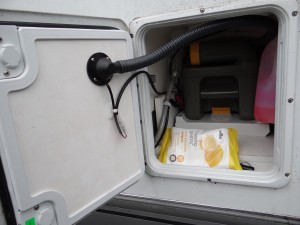
- Our Thetford cassette’s in a locker to the rear of the van. As far as I can tell it’s also heated by the blown air heating so shouldn’t freeze.
- Engine fuel
- Diesel doesn’t cope well with cold temperatures – turning waxy and refusing to run through the engine. The fuel sold in areas where this might be a problem has an additive to stop this happening, so we’ll try and get as full a tank as we can from fuel stations located near the mountains. Apparently though, even the diesel sold in the UK should cope down to -15°C, so I’m not too worried about this one.
- Air heating
- The air in the van, including that in the under-seat cupboards, is heated via a blown air system. This runs from our LPG gas supply, and is powered from two leisure batteries. This heating system is clearly critical to keeping the whole van working in the cold. Ideally it would run from diesel and mains electricity too – but it doesn’t. Probably the weakest point in our van’s winter set up is the leisure
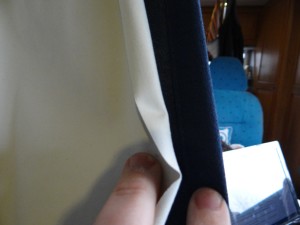 batteries needed to run the heater fan. We have about 170Ah of battery, and a 120W solar panel on the roof, but we have no generator. The batteries are a few years old though, and we might not be seeing much sun – unless we drive (or just run the engine) every few days, or recharge them with mains hook-up, we might risk running them flat.
batteries needed to run the heater fan. We have about 170Ah of battery, and a 120W solar panel on the roof, but we have no generator. The batteries are a few years old though, and we might not be seeing much sun – unless we drive (or just run the engine) every few days, or recharge them with mains hook-up, we might risk running them flat. - Ju’s also sewn thermally-insulating (and black-out) liners to all of the curtains in the van, including the ones which separate the drop-down bed from the main cab area.
- We also have an electrical fan heater which we can use on mains hook-up. However, this won’t heat the inside of the cupboards (risking condensation soaking everything) or the space between the floors.
- The air in the van, including that in the under-seat cupboards, is heated via a blown air system. This runs from our LPG gas supply, and is powered from two leisure batteries. This heating system is clearly critical to keeping the whole van working in the cold. Ideally it would run from diesel and mains electricity too – but it doesn’t. Probably the weakest point in our van’s winter set up is the leisure
- Tyres
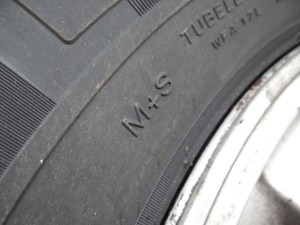 Ideally we’d have a full set of winter tyres – specially formulated to work in cold temperatures. However, these same tyres don’t last well when used in summer. The cost and inconvenience to swap between winter and summer tyres is prohibitive to us, so we’ve compromised with Mud and Snow (M+S) marked tyres. We have a set of Michelin Agelis Camping tyres fitted, which have the M+S marking on their sidewall. According to the AA website, we need this marking to be legal in Germany and Austria in winter.
Ideally we’d have a full set of winter tyres – specially formulated to work in cold temperatures. However, these same tyres don’t last well when used in summer. The cost and inconvenience to swap between winter and summer tyres is prohibitive to us, so we’ve compromised with Mud and Snow (M+S) marked tyres. We have a set of Michelin Agelis Camping tyres fitted, which have the M+S marking on their sidewall. According to the AA website, we need this marking to be legal in Germany and Austria in winter.- The tyres we have are new, so meet the minimum tread requirement in many European countries (3mm or 4mm).
- We also have a set of snow chains for the front two wheels, compulsory in a number of countries. I’ve only practised putting ’em on the once though – must have another couple of goes!
- Windscreen
- We have external silver screens which wrap around the windscreen so insulate the only windows which aren’t double-glazed in here. These should also protect the wipers from freezing (we can lift them onto the top of the screens, or use pegs to lift them off the screen completely).
- Gas
- We have a refillable GasIT LPG system, so we’re using a mixture of propane and butane. Butane won’t turn into gas around 0°C, which would stop the heating system running if we used it exclusively. From what I’ve read, LPG is mostly propane, so should work fine in sub-zero temperatures. Our bottles carry about 34 litres, which we expect to last maybe a week, although that depends on just how warm we want it in here!
- Fridge
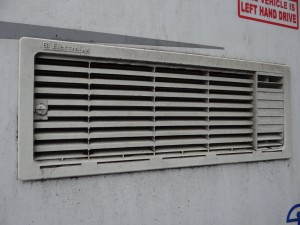 Weirdly the external vents for the fridge need special plastic covers in place if used in cold temperatures. We don’t have these covers, and it’s not clear if we need them while running on gas (rather than mains hook-up), but will pick up a set at a motorhome dealers if we have trouble with the fridge.
Weirdly the external vents for the fridge need special plastic covers in place if used in cold temperatures. We don’t have these covers, and it’s not clear if we need them while running on gas (rather than mains hook-up), but will pick up a set at a motorhome dealers if we have trouble with the fridge.
- Dog!
- Charlie’s fur has been left to grow! He seems quite comfortable in cooler air, and we lift him up onto a bench at night to get him off the floor and higher in the van (hot air rising). He also has a sleeping bag Ju made for him, but we almost always find he’s crawled out of it in the morning!

- Charlie’s fur has been left to grow! He seems quite comfortable in cooler air, and we lift him up onto a bench at night to get him off the floor and higher in the van (hot air rising). He also has a sleeping bag Ju made for him, but we almost always find he’s crawled out of it in the morning!
Cheers! Jay

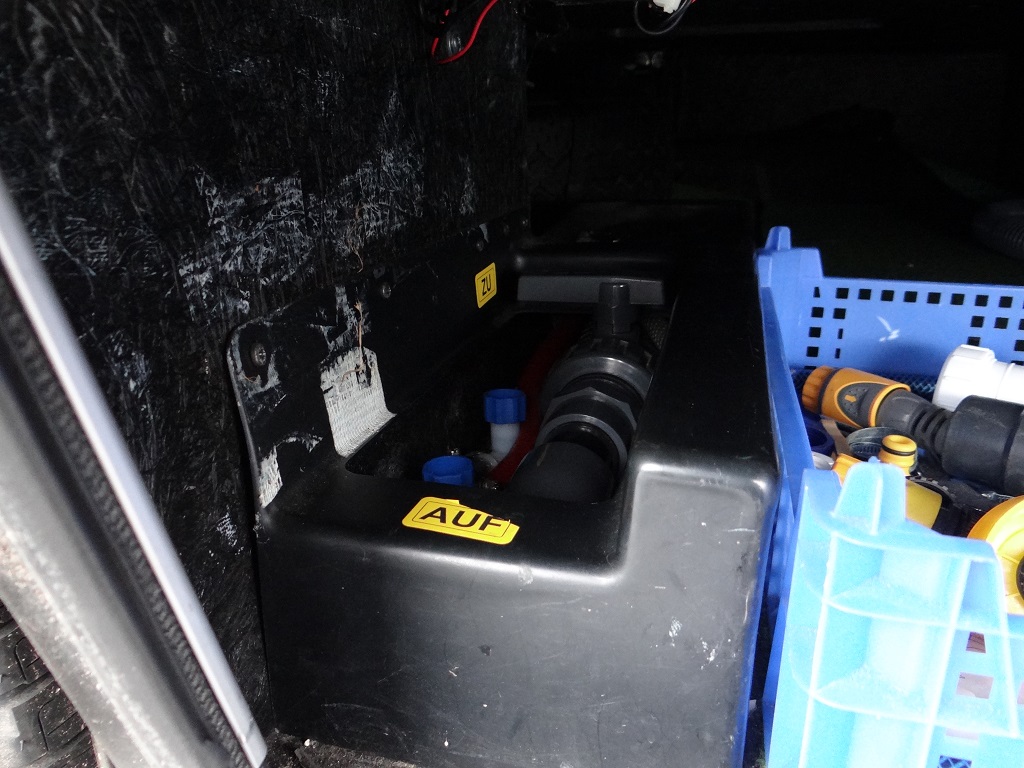
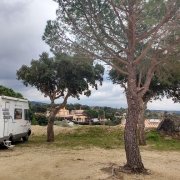
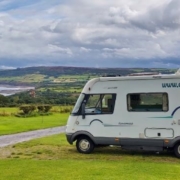
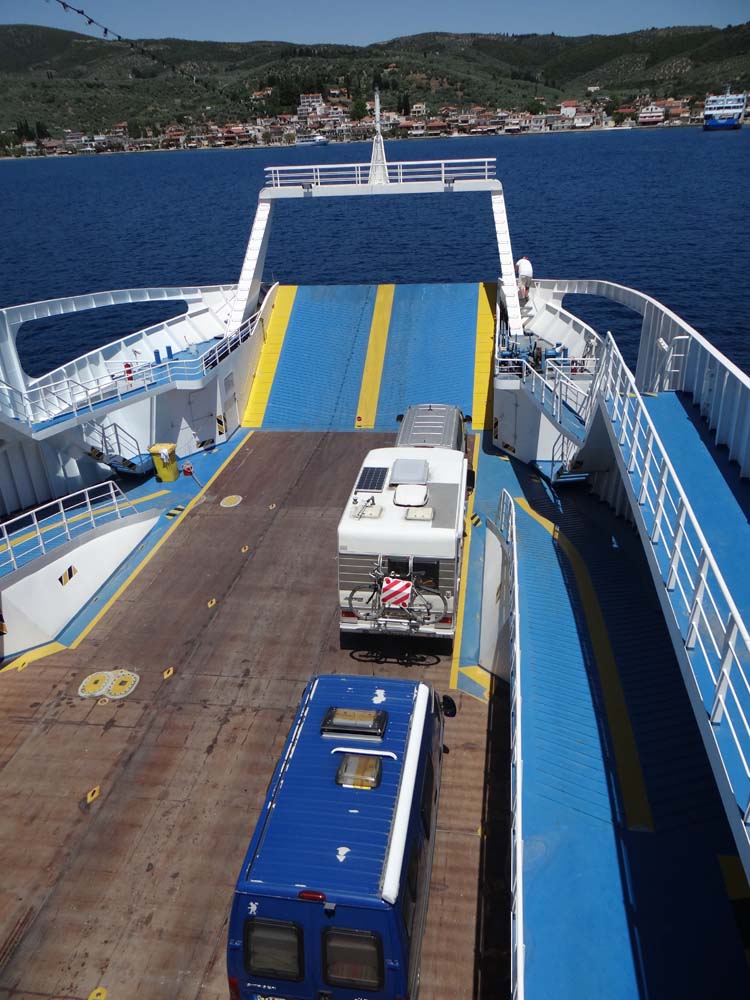
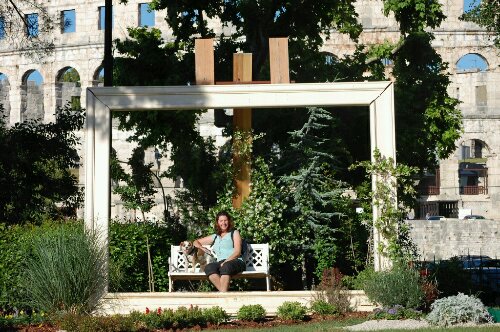



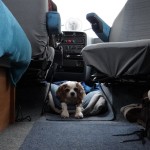
Get yourself some fridge vents before you hit the mountains. It sounds odd but your fridge needs to get hot to enable it to cool down, without the covers the cold air blowing in stops the fridge working effectively.
Interestingly Dave, only the top vent is visible on this B544 model. I’m assuming the other is behind the bumper or under the floor, and therefore protected from the wind to some degree? Cheers, Jay
hi, could I just ask why you don’t have a small generator as I’m thinking that you may be off grid most of the time in the Alps?..ie would they take too much fuel to carry? and how will you deal with drying wet cloths if you have been in the snow, and also will you be or need to wear thermal underwear and I would and do at home have an Hot water Bottle, I know 2 people and a small dog will also create heat but could you please report on how you will deal with condensation especially when drying snow wet Cloths…maybe some form of dehumidifier with reg venting, anyways hope Ju is better soon..infact my tip is just have a relaxing few days with Treats and some films while Ju recovers…All the best, Marcus
Hi Marcus. We don’t carry a genny as we’ve found they’re hard to use without annoying people around you due to the noise. The mountains might be an accepted exception, but we don’t plan to be up there that long, and the weight can be better used for ale. Drying stuff will be a challenge. Might use the bathroom as it turns into a sauna when the heating’s on full whack! We’ve read it’s a good idea to open the door and windows once a day for a few minutes to get dry air too. Films and treats sound good, I’ll get on it. Cheers, Jay
Very well prepared! Don’t forget the nightcap and socks. ;-))
All the best to Ju!
hi, yeah just as a mountain only option for a small genny re noise but if your not gonna be there too long then too much hassle and more room for Ale …more room for Ale would win it for me..another thing I’m thinking about is the drive up through snow which on youtube looks ok, I’m not to good on motorways at night but could happily be on a motorway during day/ all day not going too fast, last year went up that Grimsel Pass in Switzerland on a coach and was not liking it at all but the views were amazing..all other roads like france almost empty compared to UK…any chance of a Video of your drive up the Mountain?…well If you get the chance, chears, Marcus
Will do Marcus, leave it with us! We’ve driven across the Alps, Pyrenees, High Atlas, Carpathian and a few other mountains, although never in winter. The passes ALWAYS look worse than they actually are to drive! Ah, well, most of the time (the Petit St Bernard was a bit fun). They’re normally easy wide enough for tourist coaches, so we fit easily. That said, I still get nervous both on the way up, and again on the way down! Cheers, Jay
yeah I’ve seen your video of you driving high up in the mountains and Ju is just happily filming when I would be and have been closing my eyes (I was on a coach) I just have a phobia but am going down the same pass this year and will not let the phobia win over me as the rewards of getting out and about on new travel adventures is the the best way to live life.
Hi Jay can highly recommend the Aires at Morrillon and Samoens. The car park at Morrillon has stunning views and Samoens is a really beautiful stone masons village. There are two Aires in Samoens, one outside the entrance to the campsite and the other n the car park close to the tourist information. Best wishes to Ju. Have fun.
Hi Jason, Glad you are again on your way,, gives me something to read whilst awaiting the better weather and setting off for Spain in May.
Try putting those old corks to use under the wiper arm instead of pegs, I am sure you will have plenty of spares soon.
Robert
Hi you two.. Firstly.. Great Work!
I live in Mansfield and am planning the big, very long trip that is living in a MH fulltime :) Your an inspiration. May see you out on the road one day very soon. I did have a question. Ohh yes.. Jason, you know your mifi device. Can this still act as a router and allow you to easily turn on and off the 3/4G?
Cheers
Baz
Greetings Baz! Thank you sir. I’m easily confused. The MiFi can act as a router for WiFi-only networks, so yes, you can turn off the cellular network interface. The roof-mounted antenna won’t boost WiFi signals in any way though. Was that the answer you were after fella? Cheers! Jay
Hi guys, Im from Australia and looking at travelling around Europe in December and January in a motorhome. Any tips you could give me would be great. Is it safe and easy to move around or will there be obstacles.
Thankyou
Kristina
Hi Kristina. The only thing to be aware of is the fact it’ll be winter up here! The mountains will be snow-bound – great for skiing but you’ll need M+S or full winter tyres in those regions, plus a set of snow chains. Some roads over the mountains will be closed. Lots of motorhomes in Europe head south on winter to avoid the poor weather, Andalusia in Spain, the Peloponnese in Greece or Sicily in Italy are all popular. Other than that, it’s safe! Cheers, Jay